
Eric Heupel is a graduate student at University of Connecticut in Oceanography. He keeps a personal blog at Eclectic Echoes and Larval Images, and used to part of The Other 95% team along with me before we closed shop. You can find Eric tweeting as @eclecticechoes.
—————————————————-
Hey folks, Kevin asked me to do a stint as a guest blogger here at DSN. Right now I am writing this from South Water Caye in Belize, so this entry is going to be decidely less “Deep” than the normal posting at DSN. Unfortunately I’ll also have to submit it to Kevin after I get back stateside since there is no internet here on the island! (Strangely I love that!)
My advisor runs a Reef Fish Ecology class every two years so my lab mate (Tori) and I have to come down here as TA’s for the field research portion of the class. It’s a great job, but it is also work. Up at the crack of dawn and working until well past 10pm. Sunburn, mosquito bites, no air conditioning, no cell phone, no internet. On the plus side of course is the whole tropical isle thing, plus the reefs and animals surrounding us. Great tunes and a bit of One Barrel in the evenings doesn’t hurt either.
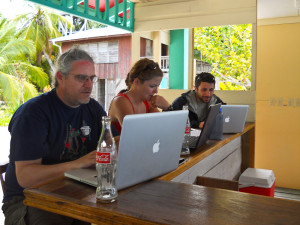
Our lab focuses on fish ecology and conservation so this class is directly related to our studies. In years past Peter has had students come up with studies related to patterns of diversity, territoriality (damselfish are amazing for this) and social foraging. This year the theme was “Seascape of Fear” with student groups creating studies to explore topics related to predation rates, piscivore feeding groups, reaction of fish to snorkel censusing etc. While helping the students (and counting snorkels) Tori and I were able spend a bit of time getting some snapshots and making observations that may turn into future project ideas for the lab or the next iteration of the class.
For me the “Seascape of Fear” was clearly defined by one animal. Not sharks or moray eels (usually the more feared tropical fish), for me it was a beautiful fish that at a stretch reaches 18″ long – the Indo-Pacific Lionfish (Pterois volitans).
Both Tori and I took the same class as undergraduates – I took the first offering of the class in 2007, while Tori went on the next trip in 2009. Neither of us spotted a single Lionfish the entire time we were in the water for either trip. This year however, we spotted a lionfish under the dock on the first evening on the island. I feared, correctly, that this was only a sign of things to come. Soon enough our worst fears were confirmed with lionfish being spotted in the coral rubble and patch reef right off South Water Caye. I counted 13 lionfish in a two hour active search (snorkeling though) over a small area of patch reefs about 100 square meters. There were four of them living in crevasses in one coral head about 3′ high and 5′ diameter. We found them on every dive, at 8 different dive sites, in mangroves, rubble, patch reef, continuous reef and in the seagrass covered rubble at the edge of a sinkhole.
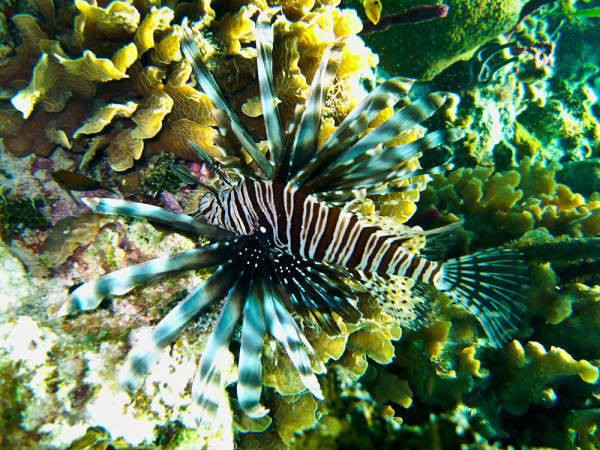
If you’re not up to speed on the lionfish invasion, they were originally spotted off Southern Florida in 1992. By 2000 they were confirmed from Florida to North Carolina and in Bermuda. They now occur throughout much of the Caribbean and up the Atlantic Coast to Long Island Sound and southern Massachussetts. There is debate about how far north there is a year round population, as they have a minimum temperature of ~10°C. They have even been found by divers at 400′ depths, which unfortunately also implies we will not be able to get them all, even if we decided to try.
The lionfish are predators and share a trophic level with many ecologically and commercially important species such as snapper and grouper. In a long-term evaluation of lionfish diet in the Bahamas, J.A. Morris found that they ate mostly bony fish such as gobies, wrasses, basslets, cardinal fishes and damselfish (all reef favorites!). Eating up to 20 fish in a 30 minute period these voracious predators are crowding out native predators through competitive exclusion and some evidence suggests they have become the dominant forage fish consumer in some areas. Smaller lionfish also eat crustaceans including shrimp and juvenile lobster. Unfortunately there have been few reports of anything in the Caribbean eating lionfish, except perhaps other lionfish.
Of course one of my major interests is the larval and juvenile stages of marine animals, and the lionfish is no disappointment here. After reaching sexual maturity it is thought the lionfish can potentially release in excess of 30,000+ eggs every other month. After fertilization by the male, the eggs drift in the currents for 3-5 days when the larvae emerge and begin hunting ciliates in the plankton. Larval duration is still being studied but it is believed that larvae continue to drift in the currents for another 3-5 weeks before settling out at about ~10mm length. This planktonic duration was sufficient to allow the lionfish to throughout most of the Caribbean and up the eastern seaboard in a very short time. The genie is well and truly out of the bottle now, no putting it back.
The best (only?) option at this point may be to create a viable fishery for the lionfish and eat our way out of the problem. In Florida this past fall I had the pleasure of trying them. They have a nice white flesh suitable for sushi, ceviche, filets or maybe frying whole with the fins spread wide for presentation Umph. Maybe culinary geniuses like Bun Lai from Maya’s Sushi in New Haven can help create a demand for the new Atlantic stocks of Indo-Pacific Lionfish.
Next time I’ll cover some of the other things I/we do in this lab including some work on deep sea conservation issues.

Morris et al. (2009) Biology and Ecology of the Invasive Lionfishes, Pterois miles and Pterois volitans. Proceedings of the 61st Gulf and Caribbean Fisheries Institute pp. 409-414
Morris, J., & Akins, J. (2009). Feeding ecology of invasive lionfish (Pterois volitans) in the Bahamian archipelago Environmental Biology of Fishes, 86 (3), 389-398 DOI: 10.1007/s10641-009-9538-8
Shanks AL (2009). Pelagic larval duration and dispersal distance revisited. The Biological Bulletin, 216 (3), 373-385 PMID: 19556601

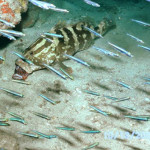

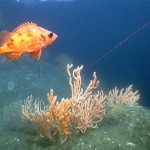
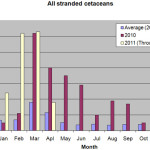

3 Replies to “Scientist in Residence: My ‘Seascape of Fear’”
Comments are closed.